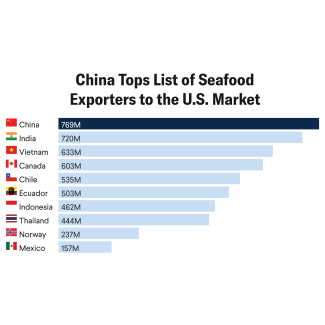Title 42, an emergency health authority invoked in March 2020, ended on May 11, 2023. Under Title 42, asylum seekers or other migrants were denied entry into the United States and expelled from the border under the premise of preventing disease spread. Now that Title 42 has ended, border policies will return to Title 8, the established law governing U.S. immigration processes. To learn more about concerns regarding migrants’ health, we spoke with Katharine Donato, the Donald G. Herzberg Professor of International Migration at Georgetown University, and Katherine McCann, Senior Program Officer for the Program on Forced Migration and Health at Columbia University.
□ □ □ □ □ □ □ □ □ □ □ □ □ □ □
Think Global Health: In your own words, how would you describe Title 42?
Katharine Donato: It was part of a law that allows for the Centers for Disease Control and Prevention (CDC) to close entry into the United States during a pandemic. It was never invoked until March 2020, when it was used to block all nonessential travel into the United States at both the northern and southern borders. An asylum seeker, for example, would therefore not be allowed to enter and if present would be expelled. Everyone was expelled — even unaccompanied children — until about mid-November 2020, when a judicial decision held that the United States could not do that. Title 42 remained in place through May 11 of this year.
Katherine McCann: I think Title 42 is a problematic use of a specific case law. Historically, it was developed to respond to cholera outbreaks, a different situation entirely than COVID-19. Although it may have its place — and certainly the government needs to have tools to respond to public health emergencies — it was used more expansively than what one would expect for an emergency order in place for three years. That’s symbolic of the misuse and weaponization of public health protections in a way that is harmful to migrants.
Title 42 was used in more expansively than what one would expect for an emergency order in place for three years
Think Global Health: Looking before and after Title 42, how have conditions at the border evolved?
Katharine Donato: Even in those first few months, when almost everyone was being processed through Title 42, some people were still processed under Title 8. Now, one of the consequences of processing everyone through Title 8 is that they go through an initial processing stage. If that initial stage convinces an asylum adjudicator that the individual might have a claim to a form of legal relief, they would be allowed to stay in the United States. Even if someone is allowed to stay, however, they are under a deportation order, that is, are required to go to court repeatedly to inform the judge that they are still seeking asylum. Once the decision about the form of legal relief is made, that person would be either deported or processed for a permanent visa.
Katherine McCann: Title 42 was largely a blanket ban on asylum that denied people arriving at the U.S. border their legal right to seek asylum. As the number of people waiting at the border to seek asylum grew over time, many areas did not have the capacity to respond to the challenges they faced. Particularly in some of the more rural areas, local health systems were neither positioned to nor provided the resources to meet the needs of the increased populations they were now serving. A lack of health care was compounded by other vulnerabilities — such as targeting by cartels and sleeping in the rough — exacerbating health inequities and leading to poor health outcomes, leaving unaccompanied minors particularly at risk. Even though the termination of the Title 42 order and the return to Title 8 processing have begun to address some of these concerns, they do not reverse the impact of three years of Title 42, nor do they resolve the injustices in status quo U.S. immigration law.
Think Global Health: What do you foresee as the biggest complications for migrants in the post–Title 42 era?
Katharine Donato: The Trump administration faced peaks when large numbers of people came into the country. Title 42 helped keep those numbers down. Now that Title 42 is no longer in force, the Biden administration [has implemented a variety of policies] designed to slow down the number of people transiting through the Americas to reach the United States. One is the launch of a mobile app called CBP One, which allows someone to schedule an appointment for initial processing in the United States from Mexico. [The administration is also] setting up regional processing centers in Guatemala and Colombia where potential migrants can apply for and obtain different kinds of visas and refugee resettlement. The third big initiative is a new parole program for Cubans, Haitians, Nicaraguans, and Venezuelans, allowing citizens of these countries to apply from their origin country.
Katherine McCann: The rollout of CBP One brings further complications and questions around access. The app is being used as part of an approach for reopening asylum processing, but at the same time it creates additional barriers — layers of biases — to asylum. For example, the capability of the app to recognize faces is less effective on darker skin, so Black migrants are less likely to be able to effectively use it. The app is offered in certain languages only, so speakers of Indigenous or other languages not offered on the app may not be able to navigate it. The app uses a lot of data and thus requires a strong internet connection. If someone doesn’t have the money to pay for a smartphone, [they] are going to be excluded. Then, either due to difficulties using the app or because the U.S. government is offering only a certain number of appointments per day, many asylum seekers are likely to still spend extended periods in transit, where they might not have access to the shelter that they need, to food security, to livelihoods or education, and to affordable health care.
When people were expelled during Title 42, almost no one got a COVID test
Think Global Health: What are your biggest concerns regarding migrants’ health?
Katharine Donato: [Any] kind of movement, big or small, can introduce the risk of disease. When people were being expelled during Title 42, almost no one got a COVID test. Eventually, some testing got under way but took a long time to implement. Countries around the world have not been effective in reducing the health risks of populations that are on the move — either people who are moving in and out or people that governments detain or send back. During this period of increasing displacement, little is being done to ensure that the health risks of displaced populations are minimized.
Katherine McCann: People on the move are in a uniquely vulnerable position as they navigate new places, disrupted social networks, financial insecurity, and uncertainty about what the future may hold. This alone puts them at greater risk of harm to their health, such as living in an overcrowded shelter with poor sanitation facilities. Then, if a person on the move does develop a health concern, they may struggle to access health care due to cost, fear, lack of legal status, discrimination, language barriers, or even just not knowing how to seek out health care in their current location. Together, these factors are likely to increase migrants’ health needs while limiting access to care across a wide range of conditions, ultimately leading to poor health outcomes and, tragically, deaths.
Think Global Health: In the last two months, we learned of the deaths of Ángel Eduardo Maradiaga Espinoza, a seventeen-year-old Honduran boy, and Anadith Tanay Reyes Alvarez, an eight-year-old Panamanian girl, under Border Patrol custody. What can we do to prevent tragedies like these in the future?
Katharine Donato: It's not unheard of. In fact, three children died in Customs and Border Protection (CBP) custody between December 2018 and May 2019: sixteen-year-old Carlos Gregorio Hernandez Vazquez, eight-year-old Felipe Gomez Alonso, and seven-year-old Jakelin Caal Maquin. What can be done? To start, ensure that everyone in CBP processing receives thorough health checks. These facilities get crowded, and when they do CBP doesn’t have the capacity to take care of a wide range of health needs. Generally speaking, CBP is an enforcement-oriented agency first, despite the fact that the demographics of the people crossing the border have shifted. We have children and mothers squeezed [into] this institution built for single male adults looking for work. The result is frequent overcrowding and less than adequate resources to ensure migrants’ health and welfare.
Katherine McCann: Many practices could help create a safer and more protective experience for people being processed through Border Patrol. One of the first is [not detaining] people unnecessarily. In many cases, many other options are available that are more dignified and can help prevent these tragedies. But when people are held in detention, they need to be held in humane conditions and receive timely access to health care. Detention facilities should have an affirmative responsibility to demonstrate they are safe and be held to account when they fall short of their obligations.
Think Global Health: Is any event in U.S. immigration history comparable, or is the situation today unprecedented?
Katharine Donato: This is unprecedented. Title 42 was never implemented before. During my lifetime, I don’t remember the border ever being shut down to essential-only travelers. So, yes, I do see it as, right now, a one-off. But could it happen again? Yes.
Katherine McCann: In many ways, it is unprecedented, although it is important to emphasize that the impact of xenophobia on U.S. immigration policy is unfortunately by no means new. Title 42, though, ushered in a period of particularly blatant misuse of public health authority to manage immigration. I hope it will not happen again, but it is important to think about the future regarding how we can increase the protections for asylum seekers to ensure that they are treated in a health-promoting and rights-affirming way.
Think Global Health: Any parting thoughts?
Katherine McCann: I think that when we are looking at the ways we can help protect migrants and asylum seekers in transit, it is key to make sure that our processes are as welcoming and dignified and efficient as possible to ensure people get the support they need. We need safeguards and policies that protect the health and human rights of migrants and asylum seekers that can persist despite changes to the political climate or who’s in the Oval Office.
EDITOR’S NOTE: On July 25, 2023, U.S. District Judge Jon Tigar issued a ruling blocking a portion of the Biden administration's current asylum policy. The blocked measure required migrants to schedule an appointment at a U.S. port of entry or provide evidence of seeking legal protection in another country before being eligible to seek asylum in the United States, helping manage the number of migrants applying for asylum. Judge Tigar has issued a fourteen-day stay for his ruling, allowing the Biden administration time to appeal.
This interview was conducted on Zoom and was edited for length and clarity.




